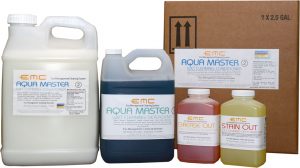The last decade was not easy for dry cleaners. The pandemic after a long slump dealt a devastating blow to all of us. I get to talk to many dry cleaners all over the country and the general consensus is that more stores will be closing. It is heartbreaking. Recently the Department of Commerce has made a very pessimistic prediction: the dry cleaning industry is one of those industries hit the hardest by the pandemic and by the time it is over, about one third of the industry will be out of the business.
It is my strong belief that those who survive this ordeal will enjoy new opportunities. But these opportunities had to be earned. The post-pandemic world won’t be the same. The consumers will have a heightened awareness about health and hygiene. And we had better to follow these changes and I am confident wet cleaning holds the key to new opportunities.
It’s not surprising that I have received more inquiries during the pandemic. These are people who seek advice to better prepare for a transition to wet cleaning. Frankly, you don’t need much to start wet cleaning. You can start wet cleaning with equipment you already own.
You will need three things to start wet cleaning: the first is the equipment, the second is the chemicals and the third is knowledge. Now let’s delve into these subjects.
Equipment (wet cleaning washer, tensioning equipment)
1. The washer
There are many wet cleaning equipment on the market and they all have their pros and cons. So instead of telling you what brand to choose, I always recommend to follow the following two rules.
The first rule. The bigger the drum, the better. When wet cleaning, you usually put only half the capacity so that clothes do not rub too much against each other. Especially with wools, putting too much in the drum can cause felting and shrinkage. Therefore, it is better to go for something larger than 50 lbs. I recommend 80 lbs. or larger.
The second rule. Make sure you can adjust the amount of water. I have always emphasized that a high level of water is better for quality and safety. With more water, we can have more safety zone between clothes and this will reduce chaffing, de-lustering, dye migration and shrinkage.
I have seen many cleaners who attempts wet cleaning with a high-end consumer unit. High-end washers are excellent but they use too little water. You are better off with a low-end washers since you can put more water if you wanted.
A dedicated wet cleaning washer is not a must and if you choose a washer with these two rules in mind, you can start wet cleaning without too much disadvantages.
2. Tensioning equipment
There is no doubt that tensioning equipment will make your work easier and faster. You don’t have to be a wet cleaner to appreciate tensioning equipment. That doesn’t mean tensioning equipment is prerequisite for wet cleaning. If you use proper chemistry and drying process, conventional presses can certainly do the job. The pants toppers and suzies you already own will work fine.
Chemicals

Chemical is the most important aspect of wet cleaning. You can never over emphasize the importance of good chemical.
If you are one of those who attempt wet cleaning with laundry chemical, you are asking for a lot of limitation. You will run into problems with dark silks, cashmere, wool suits, leather and furs. You should not confuse wet cleaning chemicals with laundry chemicals.
Currently there are many excellent wet cleaning chemicals on the market and even if you choose a more expensive one, the additional chemical expense won’t be more than 0.5%. But this small difference will contribute so much to your operating profit, not to mention the ease and quality of your work.
Wet cleaning chemicals are composed of detergent, conditioner and spotting chemicals. Since wet cleaning chemicals are made to protect the color and fabric, you should only use these.
Learn the process
Once you have the equipment and chemical, you need to learn the process. Wet cleaning is completely different from laundry so your 20, 30 years of experience won’t help you much. To properly do wet cleaning, you should not count on your experience as a launderer. This doesn’t mean wet cleaning is difficult. On the contrary, once you learn the principles, nothing is easier.
One important rule to follow is to use a lot of water or put in less garments to avoid frictions among garments – this alone will prevent 90% of problems. That’s why it is important to choose a washer with a larger drum and water level control.
I have been running wet cleaning column in the Cleaners Monthly for the last 2 years. So if you have saved past issues, I recommend reading them from the beginning. If you haven’t saved copies, you can go to the website (www.cleanersmonthly) and read e-books. For your information, I am in the process of preparing a wet cleaning manual with a possible publication date next year.

Yangsoo Kim
The author is the developer of Aqua Master wet cleaning chemicals and is currently operating Green Life Cleaners, a 100% wet cleaning service. You can contact him by phone (201) 699-7227 or email at yangkim50@gmail.com.

